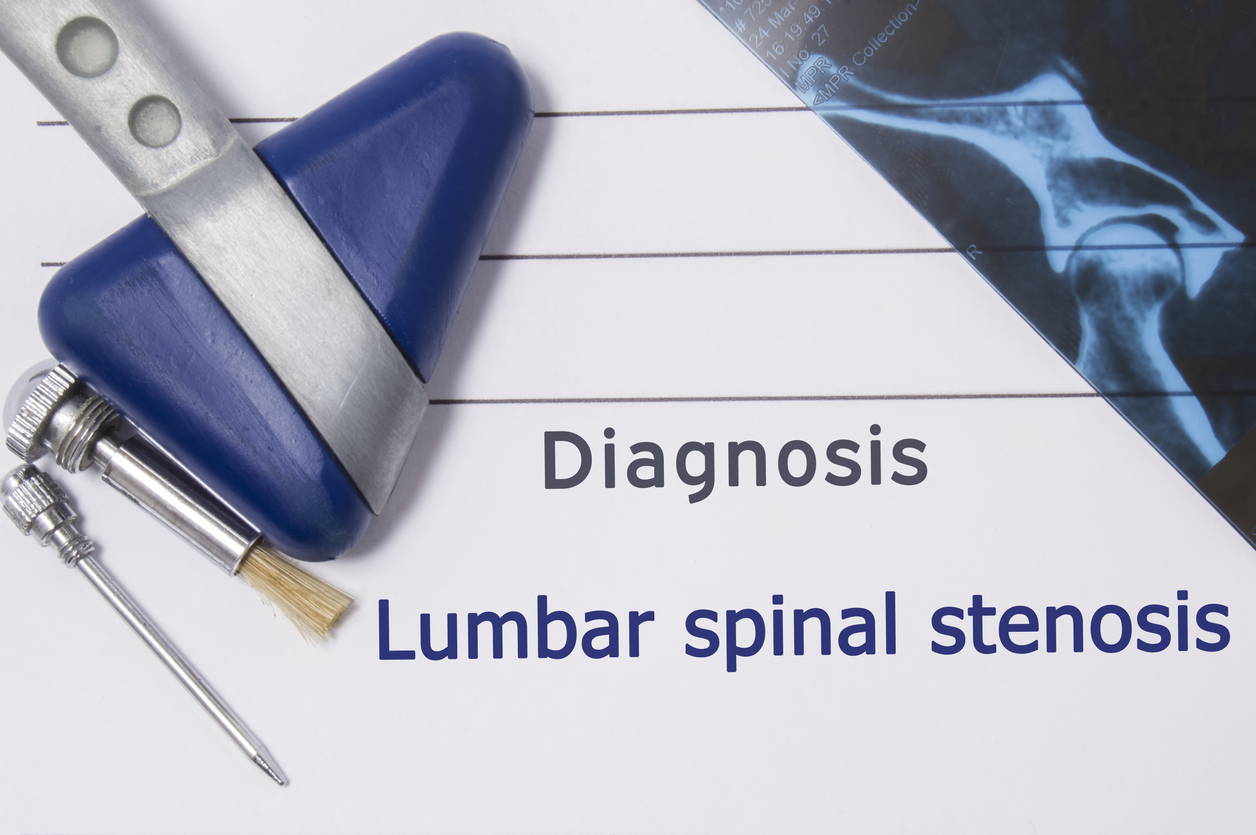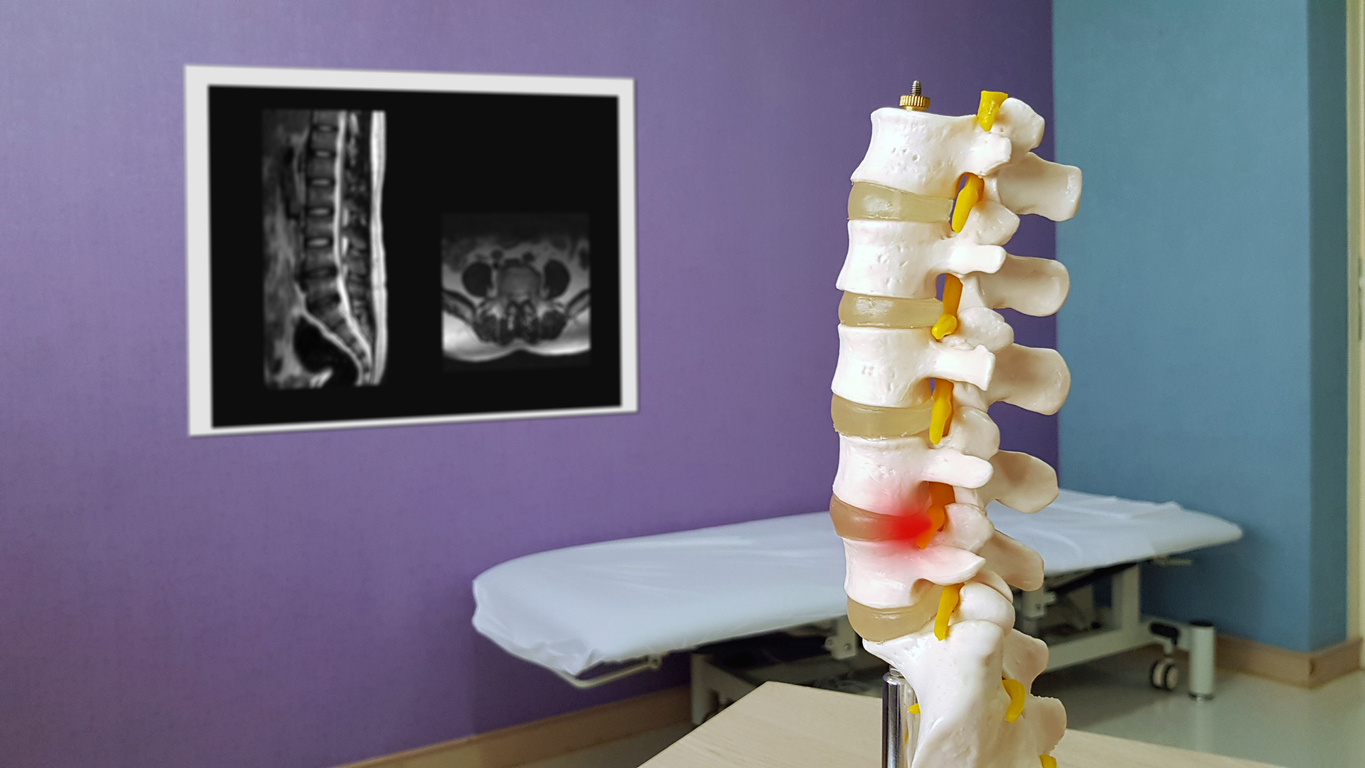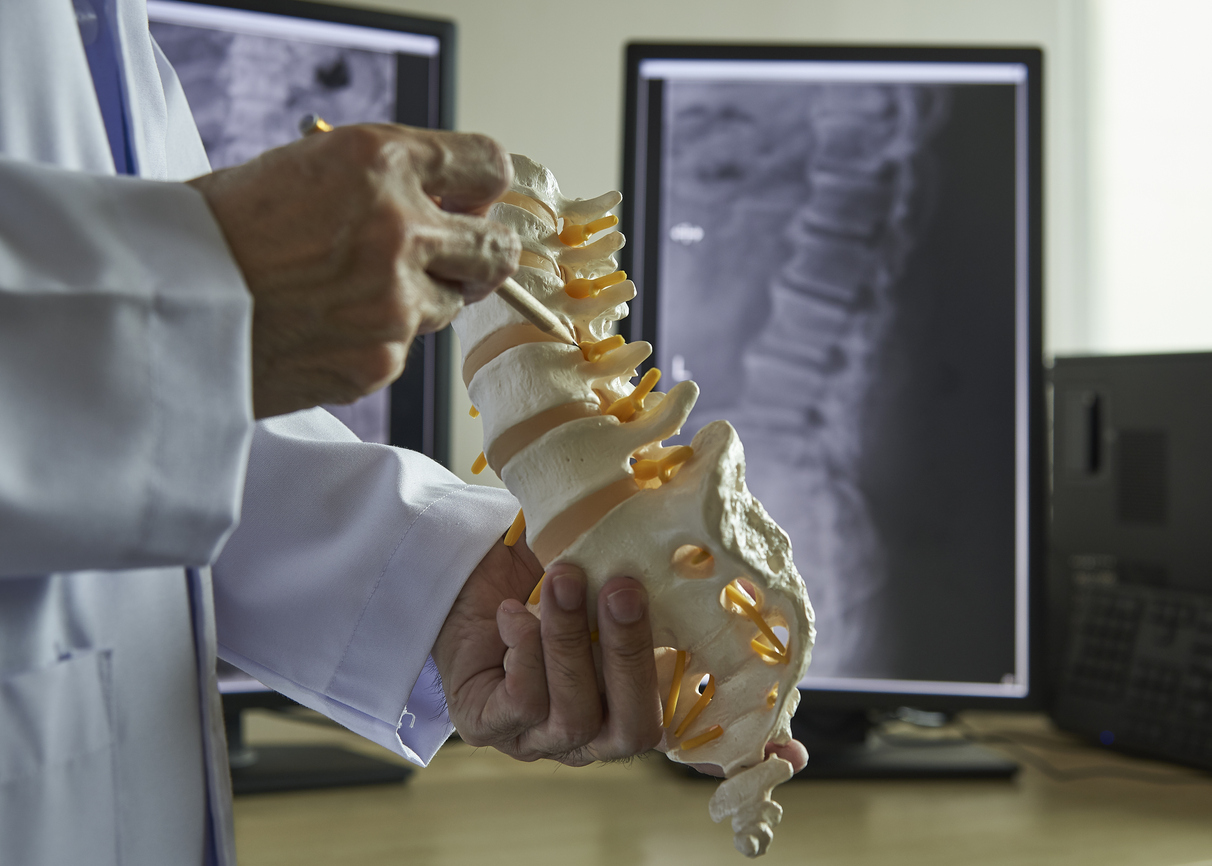Lumbar Spinal Stenosis Treatment in Santa Rosa, CA
As a result of age, intervertebral discs often become less spongy and smaller in height. The decreased support of these discs can cause the spinal canal to narrow and compress the surrounding nerves, causing pain and weakness in the lower back and legs. The distribution of the symptoms will vary based on the level involved. Lumbar spinal stenosis occurs most frequently in older patients, and can be a result of arthritis. This condition can be treated with medications, steroids or physical therapy. More severe cases may require surgery. At Redwood Orthopaedic Surgery Associates in Santa Rosa, CA we specialize in diagnosing and treating lumbar spinal stenosis.
What is lumbar spinal stenosis?
Your spine is made up of a series of vertebrae with shock-absorbing discs between them. The lumbar spine consists of the last five vertebrae leading into the pelvis. As a person ages the spine can develop degenerative changes in the intervertebral discs and joints that can create a narrowing of the spinal canal or the paths by which the nerve roots exit the spinal canal. This is lumbar spinal stenosis. This tightening can create pressure on the spinal cord or the nerve roots, which then leads to issues with pain in the lower back, buttocks, and legs and loss of movement and coordination in the legs.
Reasons the spinal canal or the foramen (where the nerve roots exit the spinal canal) narrow are numerous. Bone spurs may develop around the vertebrae and facet joints. Degenerative changes in the supporting spinal ligaments may cause them to thicken, shrinking the space in the spinal canal. Arthritis can enlarge the joints. Disc protrusions and bulging or herniated discs can also narrow the spinal canal. Spinal stenosis usually continues to progress as the effects of any or all of these conditions keep narrowing the spinal canal or foramen putting more pressure on the spinal cord or nerve roots.
Can Lumbar Spinal Stenosis be cured?
You cannot “cure” the narrowing of the spinal canal or the compression of the nerve roots exiting the spinal canal. Once the space has diminished, it cannot be cured, per se, as in an illness.
The only remedy will be either working to lessen the pressure on the affected nerves through exercise, body mechanics, and maybe physical therapy, or having a procedure to remove what is causing the compression. In a herniated disc, this could be a microdiscectomy, where the portion of the disc pressing on the nerve is removed through surgery. Other procedures, such as a laminotomy, could remove bone spurs and other impediments.
How is lumbar spinal stenosis diagnosed?
Diagnosis of stenosis in the lumbar spine is done by our Orthopaedic Surgery Associates orthopaedic surgeons through a combination of patient history, symptoms, physical examination, and imaging. These are the imaging tests we may use:
- X-rays — Detail the structure of the bones.
- CT scans — Computer tomography combines multiple x-rays to create 3D images of the spine, showing the shape and size of the spinal canal, its contents, and the structures surrounding it.
- MRIs — Magnetic resonance imaging uses powerful magnets and computer technology to combine multiple cross section images of the spine. This shows the spinal cord, the nerve roots and the surrounding areas, along with any enlargement, degeneration, and tumors.
- Myelogram — Contrast dye is injected into the spinal fluid space to outline the nerves and spinal cord and to show evidence of compression. This is used with an x-ray or CT scan.
Can lumbar spinal stenosis be prevented?
The most common cause of lumbar spinal stenosis is aging, as the spinal discs degenerate over a lifetime of movement. Obviously, you can’t prevent that, but there are actions you can take to improve and maintain your spine health, and this can prevent stenosis from occurring or it can keep existing spinal stenosis from worsening.
- Exercise — This is the best defense. Exercise strengthens the muscles that support and protect your spine and flexibility keeps your muscles and ligaments from becoming overly tight. Exercise also helps keep your body weight in check, which places extra stress on your lumbar spine when you’re carrying extra weight. It’s a good idea to combine some form of aerobic exercise, such as walking, swimming, or bike riding, with resistance training, such as yoga or lifting weights.
- Body mechanics — Just as effective is the way you hold yourself (your posture) and the way you perform certain movements (your body mechanics). Having good posture and using proper body mechanics can keep you from suffering the types of injuries that can lead to disc herniation, a typical cause of stenosis. Lifting with your legs and not your arms is an obvious place to start. Proper posture involves sitting, standing, even sleeping.
What kind of surgery is used to treat lumbar spinal stenosis?
The most common surgery in the lumbar spine is called decompressive laminectomy, where the lamina (the back side) of the vertebra is removed to create more space for the compressed nerves. A laminectomy may or may not need spinal fusion or to remove a portion of the spinal disc. A lumbar microdiscectomy aims to remove the portion of a bulging or herniated disc that is causing the stenosis. Microdiscectomies don’t involve fusion.
There are a number of other surgeries or techniques used to treat lumbar spinal stenosis:
Laminotomy — Removes part, but not all, of the lamina.
- Foraminotomy — Enlarges the foramen, where the nerve roots exit the spinal canal.
- Medial Facetectomy — Removal of part of the facet joint to create more space in the spinal canal.
- Anterior Lumbar Interbody Fusion — Removal of the degenerated disc by entering through the lower abdomen, and then fusing the surrounding vertebrae.
- Posterior Lumbar Interbody Fusion — Removal of the degenerated disc by entering through the back, and then fusing the surrounding vertebrae. Done on both sides of the spine.
- Transforaminal Lumbar Interbody Fusion — Similar to the PLIF, but usually only done on one side of the spine.
How long does it take to recover from lumbar spinal stenosis surgery?
Your recovery is dictated by the method used by our team. If we are only removing part of a herniated disc through a microdiscectomy, recovery is far shorter than with fusion. If we performed a microdiscectomy or laminectomy, patients could return to much of their normal activity in two weeks, with some exceptions on activities that put stress on the spine. If your job is very physical, you could need to miss up to four weeks, but more sedentary jobs can require as little as one week off work. For the first two weeks of recovery, your activity will be limited to walking, but we encourage doing as much of this as you are comfortable with.
Lumbar fusion surgery is a more involved procedure and, as you would expect, involves a more difficult recovery. Most patients having fusion surgery will stay in the hospital for one to five days. Physical therapy begins the day after surgery. You will have to limit your activity, making sure to avoid twisting the spine, but walking during your recovery will be important. The worst pain will generally be over by four weeks after your surgery. The period from one to three months after your fusion surgery is a crucial time for the lumbar fusion bone mass to become established. You’ll have to avoid movements and stresses on the fused segments. There can’t be any lifting over 10 to 15 pounds, and no bending or twisting. After three months, the fusion will have set. Now exercise to stress the area actually helps it become stronger. Exercise and physical therapy are an important component of a successful final outcome.
After three months, many patients can return to work, but overly strenuous jobs may take up to six months to be ready.
Schedule a consultation
Redwood Orthopaedic Surgery Associates proudly provides patients from Santa Rosa, CA and surrounding areas with treatment and surgery for lumbar spinal stenosis. Contact us at (707) 544-3400 or fill out a Contact Form here.




 Laminotomy
Laminotomy